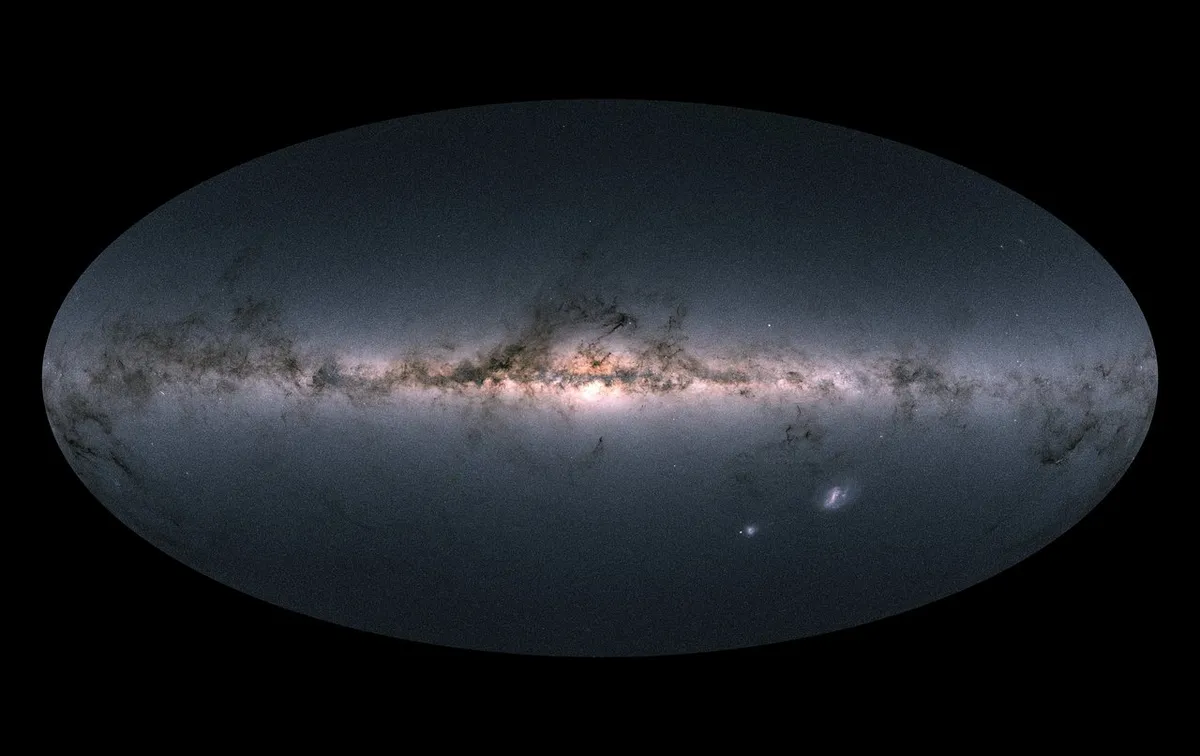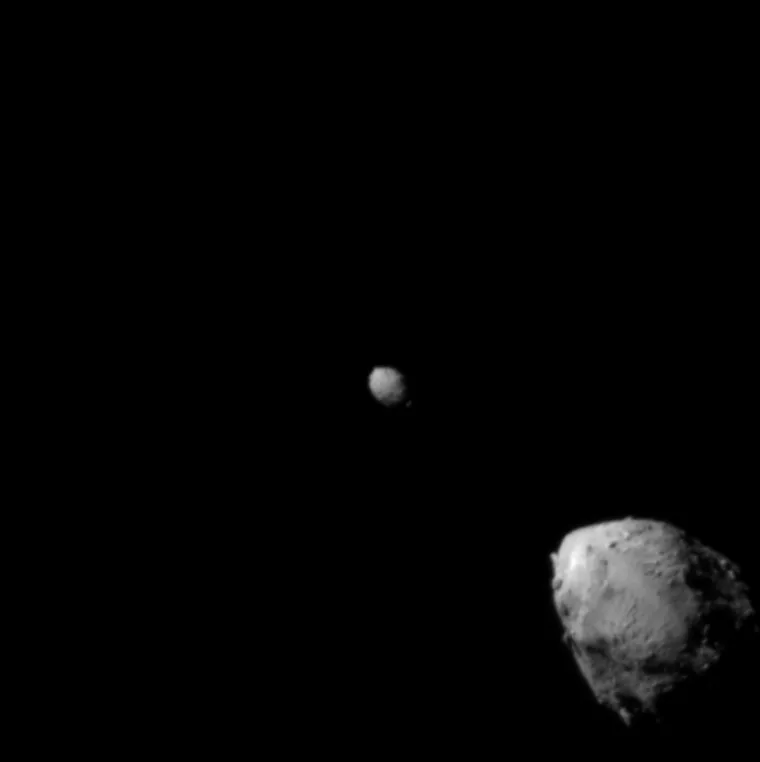The Europeans Space Agency's Gaia mission has found potential moons around over 350 asteroids.
Gaia had previously studied asteroids already known to have moons orbiting them, and confirmed those moons' existence, but this time the spacecraft searched asteroids not known to have moons, and found 352 candidates.

"Binary asteroids are difficult to find as they are mostly so small and far away from us," says Luana Liberato of Observatoire de la Côte d’Azur, France, lead author of the new study.
"Despite us expecting just under one-sixth of asteroids to have a companion, so far we have only found 500 of the one billion known asteroids to be in binary systems. But this discovery shows that there are many asteroid moons out there just waiting to be found."

Why study asteroids?
Asteroids are spacerocks left over from the formation of our Solar System; remnants of the dusty disc of material that surrounded our young Sun in its infancy.
The material in this circumstellar disc coalesced over time to form the planets and moons we see today across our Solar System.
And remnants of that disc are seen in asteroids; particularly the Asteroid Belt between Mars and Jupiter.
As such, asteroids can be studied to learn more about what our early Solar System was like and how it evolved over time.
And binary asteroids can give astronomers insight into how different bodies form, collide and interact in space.
Double impact craters can reveal insights into binary asteroids, too.
If Gaia's data is confirmed, it will add 352 known binary asteroids to the total, nearly doubling the known number of asteroids with moons.

Gaia's asteroid discoveries
ESA’s Gaia space telescope launched on 19 December 2013, tasked with surveying over a billion stars to create the most precise 3D map of our Milky Way ever made.
It was able to capture an image of the Webb Telescope, showing what the James Webb Space Telescope would look like if you saw it in space.
In its data release 3, Gaia revealed the positions and motions of over 150,000 asteroids, and astronomers were able to use this data to look for asteroids 'wobbling' as a result of the gravitational tug of a moon in orbit around them.
This is the same method used to detect binary stars or even exoplanets orbiting stars.

Gaia was also able to unlock the characteristics of the asteroids' chemistry, gathering data known as asteroid ‘reflectance spectra’, which relates to how light from a celestial object can reveal information about that object's colour and composition.
"Gaia has proven to be an outstanding asteroid explorer, and is hard at work revealing the secrets of the cosmos both within and beyond the Solar System," says Timo Prusti, Project Scientist for Gaia at ESA.
"This finding highlights how each Gaia data release is a major step up in data quality, and demonstrates the amazing new science made possible by the mission."

Gaia and DART
The Gaia mission lent its assistance to the DART mission in 2022, which purposely collided with Dimorphos, a moon orbiting asteroid Didymos.
The aim of the DART mission was to study how the collision affected the asteroid moon's orbital path.
Gaia observed the shadow cast by Didymos as it passed in front of distant stars, known as stellar occultation.
ESA's Hera mission is due to launch in October 2024 and will follow up on the DART mission to produce a post-impact survey of Dimorphos.
‘Binary asteroid candidates in Gaia DR3 astrometry’ by Liberato et al. (2024) is accepted for publication on 8 August 2024 in Astronomy & Astrophysics. Read it at doi.org/10.1051/0004-6361/202349122.

